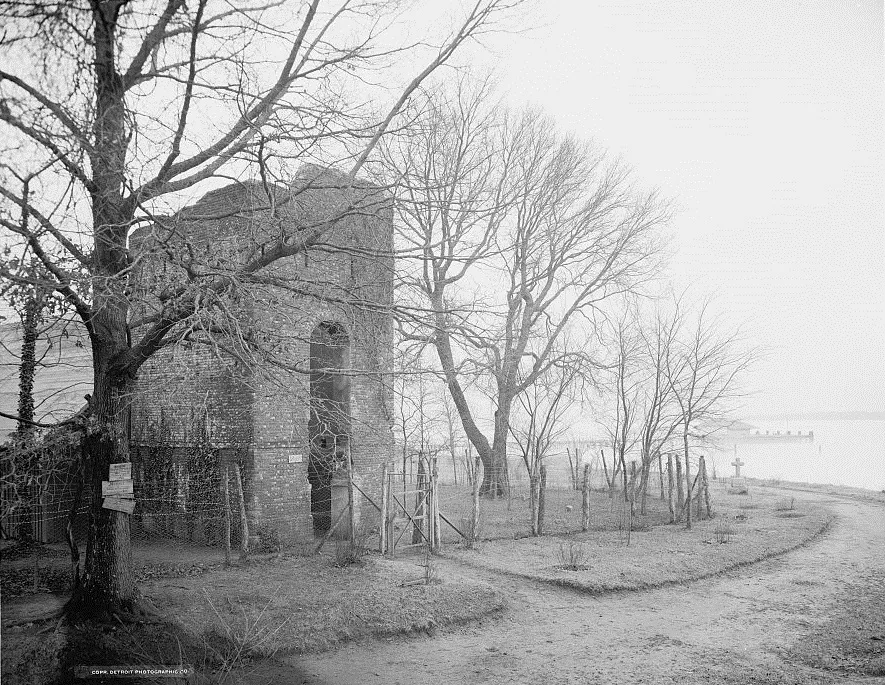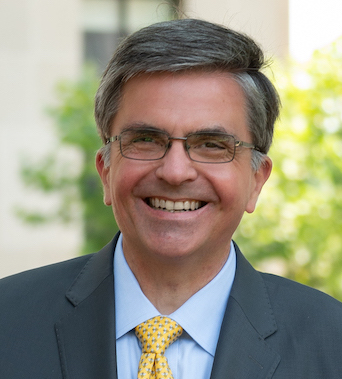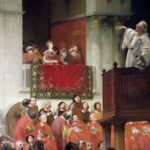It’s been half mockingly but half seriously remarked that the last surviving U.S. Episcopalian is likely now among us. In the 1960s The Episcopal Church’s membership peaked at 3.6 million. It’s now down to a mostly ageing 1.6 million, declining fast. Like the Unitarian Church, it’ll likely endure as an institution almost indefinitely thanks to considerable financial assets, even without many people. But its demise, with other Mainline Protestant denominations, has been dramatic. Although never huge in numbers, the Episcopal Church across centuries served as America’s religious finishing school, educating our leaders, and providing liturgies for our national life.
The Episcopal Church is part of the global Anglican Communion, a spiritual fraternity of many national churches that descend from the Church of England, which itself is fast shrinking. A recent poll of Church of England clergy found most saying Britain is no longer a Christian nation. While their church remains the official state church, fewer than half of the British now identify as Christian. The Church of England’s average worship number on a typical Sunday is only about half a million. Its pageantry shines during British public rites, such as funerals, weddings, and coronations. But its direct impact on most British people is sadly minimal.
Anglicanism is vibrant in Africa, where most of Anglicanism’s 70-80 million adherents now live, especially in Nigeria. But everywhere in the white majority Anglosphere, Anglicanism is in steep decline, from North America and Britain to Australia and New Zealand. This decline, absent direct divine intervention, is likely irreversible in majority European societies. These majority white Anglican denominations have followed the sad trajectory of other theologically liberalized Protestant denominations. Newer and more conservative Anglican denominations are sometimes growing but are much smaller. Even if they were to grow quickly, it would take generations for them to reach what denominations like the Episcopal Church once had. The Anglican Church in North America has under 130,000, or less than 10 percent of the Episcopal Church’s current U.S. membership.
There’s no point in waxing too nostalgic about the once significant role of Anglicanism in American public life. It will not be restored, but we can be grateful for its magnificent legacy. Its accomplishments have much to teach us today. Much of early British America was literally founded as an Anglican society. Recently I was vividly reminded of this history by visiting the two earliest English colonies in America.
The Lost Colony at Roanoke Island in coastal North Carolina was the first attempt in 1585. There evidently was an Anglican cleric, who baptized the first English child born in America, Virginia Dare. The native friend to the English colony, Manteo, was baptized shortly before Virginia and was likely the first native convert in America to Anglicanism. He and Virginia Dare are celebrated by the Episcopal Diocese of East Carolina. Both Manteo and Virginia Dare disappeared with the colony into the mists of history.
Unlike the Lost Colony, the 1607 settlement at Jamestown endured as Britain’s first surviving American colony. It too included from the start an Anglican cleric, and the original thatched and mud Anglican church occupied the center of the fortification. Church attendance was mandatory. Eventually a more permanent brick church was constructed, whose front tower is the only remaining above ground structure from Jamestown. A new memorial church was added onto the old tower on the 300th anniversary in 1907. Early Jamestown notables still remain buried beneath. America’s first elected legislative assembly convened in the church in 1619, representing embryonic democratic America. Pocahontas, the native chief’s daughter who helped save Jamestown during famine, was likely baptized here. The attempted native massacre of the Virginia Colony in 1624, which killed 20 percent of the colonists, would have been worse absent the warning from a native converted Anglican boy recalled as Chanco. The Episcopal Diocese of Southern Virginia has a retreat center named for him.
The Church of England was the established church for the Virginia Colony until post-revolutionary Virginia disestablished it at the urging of Thomas Jefferson and James Madison, themselves both lifelong Anglicans who favored full religious liberty. Nearly all of the southern Founding Fathers like George Washington were Anglicans, among others, like Alexander Hamilton. It’s impossible to imagine America without its Anglican roots, which fed the seedlings of liberty, public order, and social tolerance.
After disestablishment in states like Virginia, Anglicanism became the church of the wealthy and upper middle class in the United States, producing presidents, senators, supreme court justices, and countless other leaders. It was numerically overtaken exponentially by the revivalist churches emerging from the Second Great Awakening. But what it lacked in sheer numbers it more than compensated for in cultural influence.
Some Episcopalians still enact the assumptions and rites of past social prestige. But the Anglican movement in America in all its branches has become a niche culture for persons who appreciate its historic rites and beauty of worship. Evangelical nondenominational Christianity, largely Baptist in ethos, has become America’s default Protestant religion. This is not good or bad news. Christianity, especially Protestantism, is never static. Its churn across the decades and centuries never ends.
In another half century or so, some new form of Christian practice might become paramount in America. Perhaps the last living U.S. Episcopalians can greet that new church movement’s ascendancy, grateful for the past but also hopeful about the future. God always presides over His churches.






Comment by Thomas Rightmyer on September 6, 2023 at 7:41 pm
I have a pretty complete list of the Church of England clergy who served in British America before 1785 and have not found any record of a Church of England minister in the Roanoke Colony. The first Church of England clergyman (aside from the chaplain on Drake’s Pacific voyage whom I also don’t know) was Robert Hunt at Jamestown. The lay governor of the Roanoke Colony may have baptized Virginia Dare, who may have been his grandaughter. Tom Rightmyer trightmy@gmail.com
Comment by Diane on September 6, 2023 at 7:46 pm
The Anglican Church in North America (ACNA) and the Reformed Episcopal Church, both of which are very conservative, theologically, may be growing more quickly than you think. (Watch this space.)
And many of us are “refugees” from the Episcopal and other mainline (e.g., UMC) churches that appear to have lost their collective minds.
Comment by Andrew on September 7, 2023 at 10:13 am
Such a sad thing given the history and beauty of the Anglicanism (discounting its rather dubious birth). The Liturgy is such a literary window (much like the stained glass of the Churches) to promoting a relationship with God. Having attended Yale Div and having many Episcopal friends who did the joint program with Yale and Berkeley it saddens me that their denomination is in such state.
Comment by Gary Bebop on September 7, 2023 at 2:55 pm
United Methodism has tumbled into the same abyss of error and melancholy which Mark Tooley describe in touches of wistful sentiment. The church now serves modernity in all its vain, vapid panoply. These stories will soon become routine, dull, mundane.
Comment by David Mu on September 7, 2023 at 3:43 pm
Today’s Episcopal Church actual trinity of anti-white, anti-male and anti-West (so-called) theology is certainly not going to create either actual interest of persons or actual product that results in anything long remembered.
And yes – it does like hospice which only marks another reason to avoid the whole dull thing for almost anything – but it.
Comment by David on September 8, 2023 at 8:35 am
The Anglican Church changed in the 19th century as noted by Kenneth Clark in 1928.
“To a good protestant of 1830 the least suggestion of symbolism—a cross on a gable or on a prayer book—was rank popery. All forms of ritual were equally suspect. The clergyman wore a black gown and read the communion service from his pulpit; no one knelt during the longer prayers, or stood when the choir entered; indeed, the choir, if it existed at all, was hidden in a gallery, where it performed to the accompaniment of violins and a ‘cello. The old Gothic churches had been gradually adapted to suit this type of service. Superstitious features such as piscinae [for disposable of consecrated fluids] and sedilia [ceremonial seating for the clergy] were abolished; since altars were seldom used, even as tables, the chancel was either abandoned or employed as a vestry; and whatever symbolic sculpture existed in the nave was concealed by massive, comfortable pews for the rich and precarious galleries for the poor.”
It was in the second half of the 19th century that the church adopted a form we associate with it today.
The decline of classical music has had an effect on church services. Some places still offer a “traditional service” for the old folks, but once they are gone, these will disappear. The formal “cathedral style” services with processions and liturgy have given way to praise bands and standing during musical numbers and waving your arms in the air. Obviously, churches that remain with the old forms will decline. Likewise, there is the problem of demographics with birthrates below replacement level. Immigration is unlike to aid Main Line churches.
Comment by Pastor Mike on September 9, 2023 at 12:25 am
Ironically, perhaps the most influential Episcopalian today is someone who admits that he is part of a church that barely knows what it believes anymore.
That person is Tucker Carlson, who is speaking out in surprising ways on a number of issues in our culture with greater moral clarity than many church leaders.
God has quite a sense of humor in whom he decides to use as his vessel.
Comment by Bill Riggs on September 9, 2023 at 1:59 pm
It is good to see Tim Rightmyer come up online in these comments. Tom might not be one of the last Episcopalians in this country, but he is one of the best.
Comment by Bob on September 10, 2023 at 12:26 am
Uh, did I hear you describe Jefferson as an Anglican?? There’s your problem in a nutshell. The creator, perhaps desecration responsible for the “Jefferson bible” is called an Anglican. Actually quite a modern one. That’s no compliment.
Comment by Sue McKeown on September 12, 2023 at 3:34 pm
We have both traditional and contemporary Eucharistic services in my ACNA parish. Our long-time rector retired last year. Our new rector is making the contemporary Eucharist more liturgical, not less so. He’s added back the Gloria Patri and Agnus Dei to the contemporary Eucharist and the music includes more traditional hymns played by the musicians. Two of the musicians and their families have left the church, but they’ve been replaced. (One family w/ a musician had about a 40-45 minute drive each way, along w/another long drive each way for the musician for weekly practice one evening a week.) At the traditional Eucharists lectors and chalice bearers wear vestments; the new rector is considering them for the contemporary Eucharist as well. We also have the procession and recessional with the cross again at the contemporary Eucharist.
Comment by Colin Ross on September 30, 2023 at 3:44 pm
I think you missed a couple things here… Like how the anglican church was the first institution to purchase slaves in the Jamestown…how the early government of virgina spearheaded by Jefferson and Madison was extremely hostile towards the episcopal church. Mostly because the church was (as always) trying to weasel itself into becoming a quasi official church of America. The church has long been an elitist, traditional stronghold that no ones been able to find a use for since Henry VIII needed a new wife and lots of preachers didnt want to get real jobs.